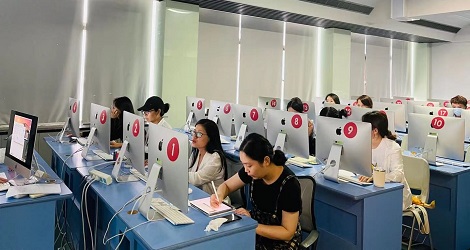【Course Introduction】
Fashion design is a comprehensive discipline that encompasses various specialized areas, including style design, structural design, and process design. At its core, design is a problem-solving process developed to meet specific needs, and it plays a vital role across many fields—from urban planning and theoretical modeling to product development and engineering systems. As both a practical and cultural activity, design reflects the evolution of human civilization and serves as a key means of aesthetic creation. In the context of fashion, it refers to the conceptualization and creation of clothing, beginning with sketches and renderings and continuing through to the final garment. Design is not purely functional—it contains both factual elements that describe a situation and value-based elements that convey judgments of quality or beauty. Different types of design require different cognitive approaches: engineering prioritizes rational analysis, industrial and product design focus on holistic visual thinking, while fashion design emphasizes aesthetic appeal. A designer’s work must address not only individual needs but also broader social, economic, technical, emotional, and aesthetic considerations. These needs often conflict, making the act of design a balancing process that mediates between them. While design thinking continues to evolve, it must still adhere to certain principles and accommodate diverse requirements. Ultimately, design is the foundation of both material production and cultural expression, shaped by the cultural context in which it exists. Even when using similar materials or techniques, fashion design in different societies will result in distinct stylistic outcomes, reflecting their unique social norms and cultural identities.
【Enrollment Target】
Individuals with no prior experience who are dedicated to pursuing a career as a fashion designer.
Pattern makers and professionals currently working in the fashion or apparel industry.
【Course Content】
1.Basic Fashion Illustration Techniques
This module covers the fundamental techniques of sketching and color shaping, as well as intermediate-level techniques. Students will learn figure painting sketching techniques and simplified figure fashion clothing picture techniques.
2.Advanced Effect Drawing Techniques
Students will study human body proportions, dynamic poses, and detailed rendering of facial expressions and body parts. The course also explores movement and rhythm in fashion figures, techniques for depicting collars, sleeves, and pockets, as well as the relationship between clothing folds and body structure. Rendering techniques for various textiles will be introduced, including step-by-step methods to illustrate materials such as denim, lace, chiffon, cotton, linen, silk, fur, leather, synthetics, knitwear, wool, cashmere, and down feather. The course teaches how to produce comprehensive effect drawings, what the painting techniques of sketches of styles are and how to create effect drawing s across a variety of garment styles.
3.Digital Fashion Design
Fashion Design Fundamentals: learn basics of digital tools such as Photoshop and Illustrator, functions like image optimization, vector tracing, texture mapping, material rendering, and how to simulate hand-drawn effects digitally.
Advanced Fashion Design Knowledge: learn digital tools such as Photoshop and Illustrator for fashion-specific applications, including thematic illustrations over the years. Learn to draw fashion styles and present material visualization. Case studies include lace and denim drawing, trench coat illustrations, charcoal fashion sketches, fabric swapping, business attire design, and fur and leather garments.
4.Fashion Design by IPAD
This module trains students to use ipad software for fashion design, covering image optimization, vector tracing, skin rendering, character mapping, and line sketch creation. It also covers visual techniques for various fabrics and accessories, fabric print design, and background detailing for fashion illustrations. Students will develop skills to complete polished, professional-looking fashion design renderings using the ipad.
5.Fashion Design Studio & Thematic Projects
In this practical module, students will explore fashion aesthetics, design principles, garment styling, fashion trends, fashion textile fabrics, brand identity, and market research. Based on a given theme, each student will develop a personalized collection, produce garments, and showcase their designs in the school’s final runway show or exhibition.
【Introduction of Teacher】
A distinguished visiting instructor at SIFEC Fashion School, graduated from Donghua University in 2008 who is an independent senior womenswear designer with 10 years of experience in fashion design, specializing in womenswear brand design and research whose several ready-to-wear collections have won awards at the Shanghai Fashion Design Competition and have been featured by hosts on Shanghai TV Station programs. Currently serves as the chief designer for the high-end womenswear brand LE366.






